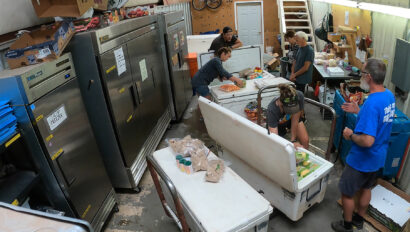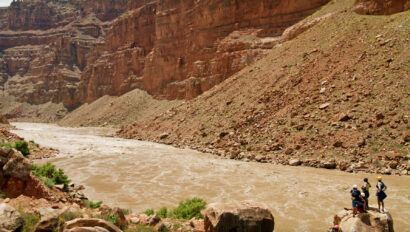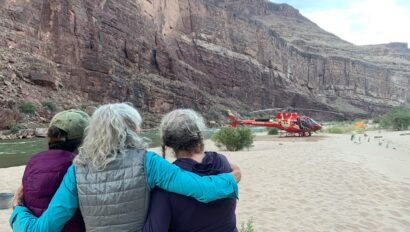Guide Talk: He’s Been at it a Lifetime…

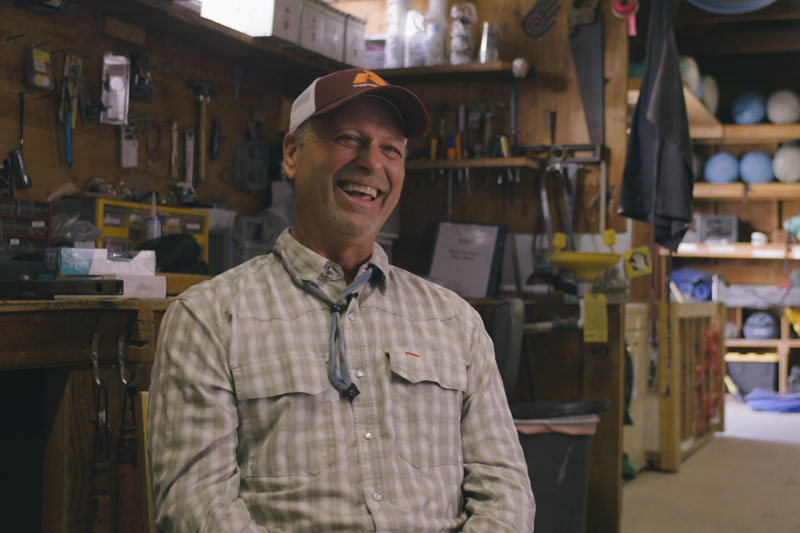
It was 1978 and Michael Fabry was living in a teepee along California’s Stanislaus River near Angels Camp, CA. The “Stan” was quickly becoming a famed stretch of whitewater and after watching OARS and other outfitters float by with rafters every afternoon, guiding piqued Michael’s interest.
That wasn’t the first time the thought of becoming a river guide crossed his mind though.
“I started teaching skiing at Bear Valley, which is one of the local ski resorts,” said Michael. “A lot of the boatmen that were working in Grand Canyon were from Bear Valley, so it wasn’t long until I thought, ‘God, that would be a great job.’”
That spring, with a resume in hand, he headed over to OARS.
“I had taught hang-gliding for years in the Bay Area, and I was in ski racing and a lot of athletics when I was in high school,” he continued. “As a result, I guess my resume looked okay, and they pretty much hired me on the spot. The next day I was on the Stanislaus River.”
Just three weeks into his new job, OARS founder George Wendt sent him down to Grand Canyon where he still spends summers guiding when he’s not teaching at Columbia College in Sonora, CA. That’s 41 seasons and some 180 trips through Grand Canyon according to Michael.
“I guess you could almost call that a lifetime,” he joked.
But he’s not done yet.
“It all depends on how I hold up,” said Michael. “If I can’t get back on my boat by myself—that’s always been my motto—it’s time to move on. I’d hate to move on, but that would be the time.”
Meet Longtime Grand Canyon Rafting Guide Michael Fabry
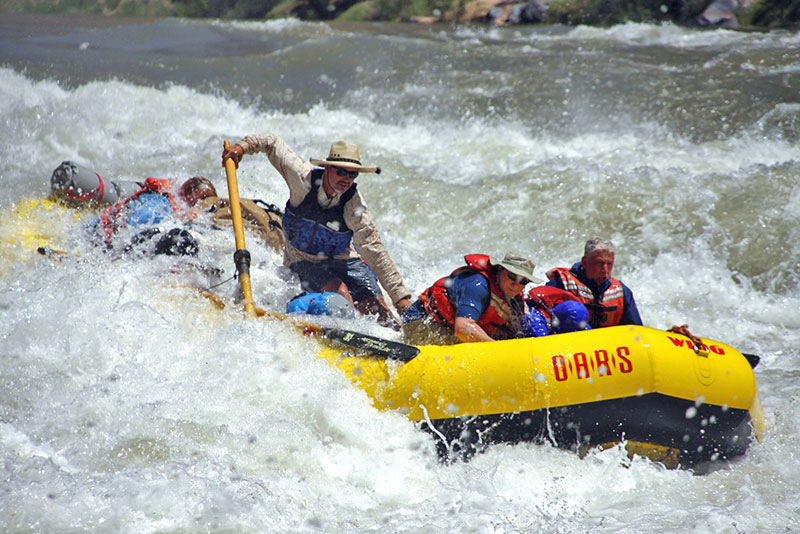
You were hired on the spot. How long did it take before you were out guiding?
Just two days of training, and then on day three they called and said, “Hey, you guys, we got good or bad news. We’re not sure which it is, but you’re going to guide clients down now.” I can just remember going down Bailey Falls—one of the big rapids on the Stanislaus River—and dump-trucking. My entire boat flips over and everybody went swimming. And I probably flipped two, maybe three times the first day because I was really a greenhorn.
How did you end up in Grand Canyon?
The first introduction I had to the Grand Canyon, was talking to George Wendt, of course. I had been [at OARS] about three weeks and he said he wanted to see me in the office. I’m thinking, “Oh my gosh, what’s the boss want to say?” And George says, “We need someone to row a boat in the Grand Canyon.”
This is the first year, I’ve been here three weeks, and I go, “Whoa, are you kidding me? You want me to do a training trip in the Grand Canyon?” I say, “Yeah, of course, but I have some issues. I have this Plymouth Duster. The transmission is out. I can’t drive it out.” Then I ask, “George, how long do I have before this trip puts on?” He says, “You got seven days to make it out to the Grand Canyon.” I say, “Well, I’ll be there, I promise, but I’m going to ride my bike.”
So I got on my bicycle…700 miles. And it was like 110-degrees some days out there. Seven days later, I end up at Lees Ferry where I throw my bike in the back of somebody’s car. Then I got on this Green River boat that needed to be pumped three times a day. That was my first experience.
What was it like to raft Grand Canyon for the first time?
There’s a hole in the Grand Canyon called Serpentine. It’s one of the biggest holes in all of Grand Canyon. And the two boatmen that were leading that trip had indicated to me the first time going down, “You’d have a great time if you go over into that hole called Serpentine.” And I remember going into the hole, which was pretty close to 20 feet, right straight down. The Green River just bent right in half. The front of the boat came up and hit me in the face. I broke my nose, and I hit my hands on the frame up front and busted my knuckles open. That was an initiation like, “Hey, buck up buddy.” They wanted you to learn the hard way and the hard knocks, and they wanted to see how tough you were. It was a machismo era for sure.
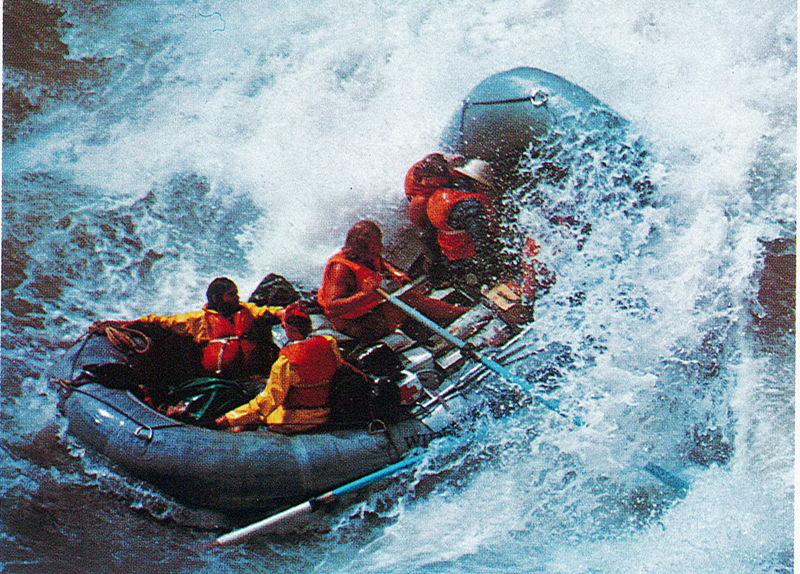
What else do you remember about those early trips?
Well, like I said, we had Green Rivers, which were army surplus boats with Havasu valves. We’d always say you couldn’t flip a wet noodle, so it was really hard to flip those boats because they were constantly needing air inside of them. You would sleep on these boats, and in the middle night you’d have to pump it up, first thing in the morning you’d have to pump it up, and at lunch time you’d have to pump it up. The frames were all wooden frames. The oarlocks, they weren’t oarlocks, they were pins, which were a lot more dangerous.
A lot of the food we had was put in rocket boxes so we had to have a lot of grains. We couldn’t have a whole lot of fresh food. And earlier you used to just dig a hole and you’d go to the bathroom in it. And ‘78 is about the time that you started using rocket boxes. So, that was part of the early stages.
Today, our porta pod system is much more advanced. Our water filtration system is much more advanced. Our life jackets and safety records have improved immensely. It’s changed radically.
What do you enjoy most about being a river guide?
There’s nobody that ever leaves the Grand Canyon that is the same. It always has some kind of an everlasting imprint on them. I would say seven out of ten people tell me that it’s the best thing that’s ever happened to them. Or the best vacation they ever had in their lives. Yeah…rock ‘n roll stars don’t get that.
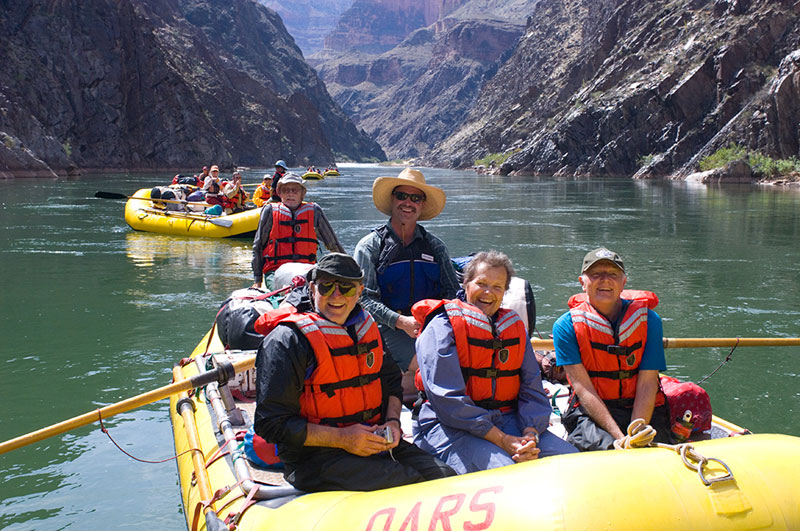
Is there one river that has your heart?
Of all the rivers, which there are probably 40 different rivers that I’ve done throughout the world, I would never want to miss the Grand Canyon. I always tell people if you took just one square mile out of the Grand Canyon, it could be any square mile out of the 277 miles of the Colorado River, and you put it anywhere on the planet, it would be considered a national monument. The beautiful thing is we have 277 miles of it. There are hikes in Grand Canyon that are unparalleled to anywhere else in the world, like Thunder River, Havasu Canyon, Deer Creek. These are places that if people had access to, there would be millions of people showing up every single day.
Is there a moment in your career where you felt especially proud to be an OARS guide?
I had a 16-year-old young lady that Make A Wish Foundation had given a five-day Grand Canyon trip to. That was her wish before she died. She died three months after the trip. But when I think back to that, about her doing that five-day trip, it’s pretty special.
This interview with Michael Fabry was part of a series of conversations we documented for our 50th Anniversary and has been edited for clarity.
Watch the commemorative film: 50 Years
Related Posts
Sign up for Our Newsletter

